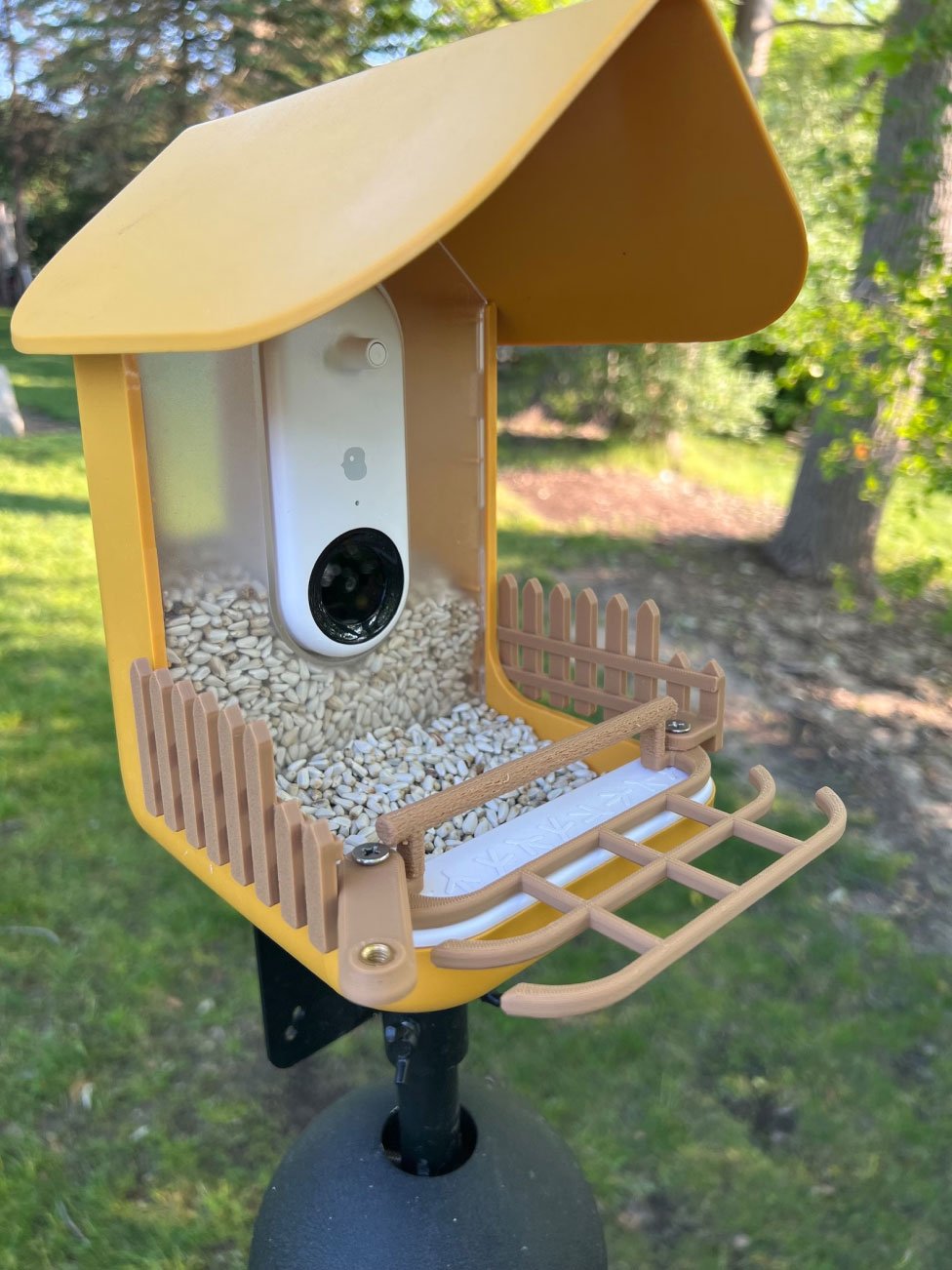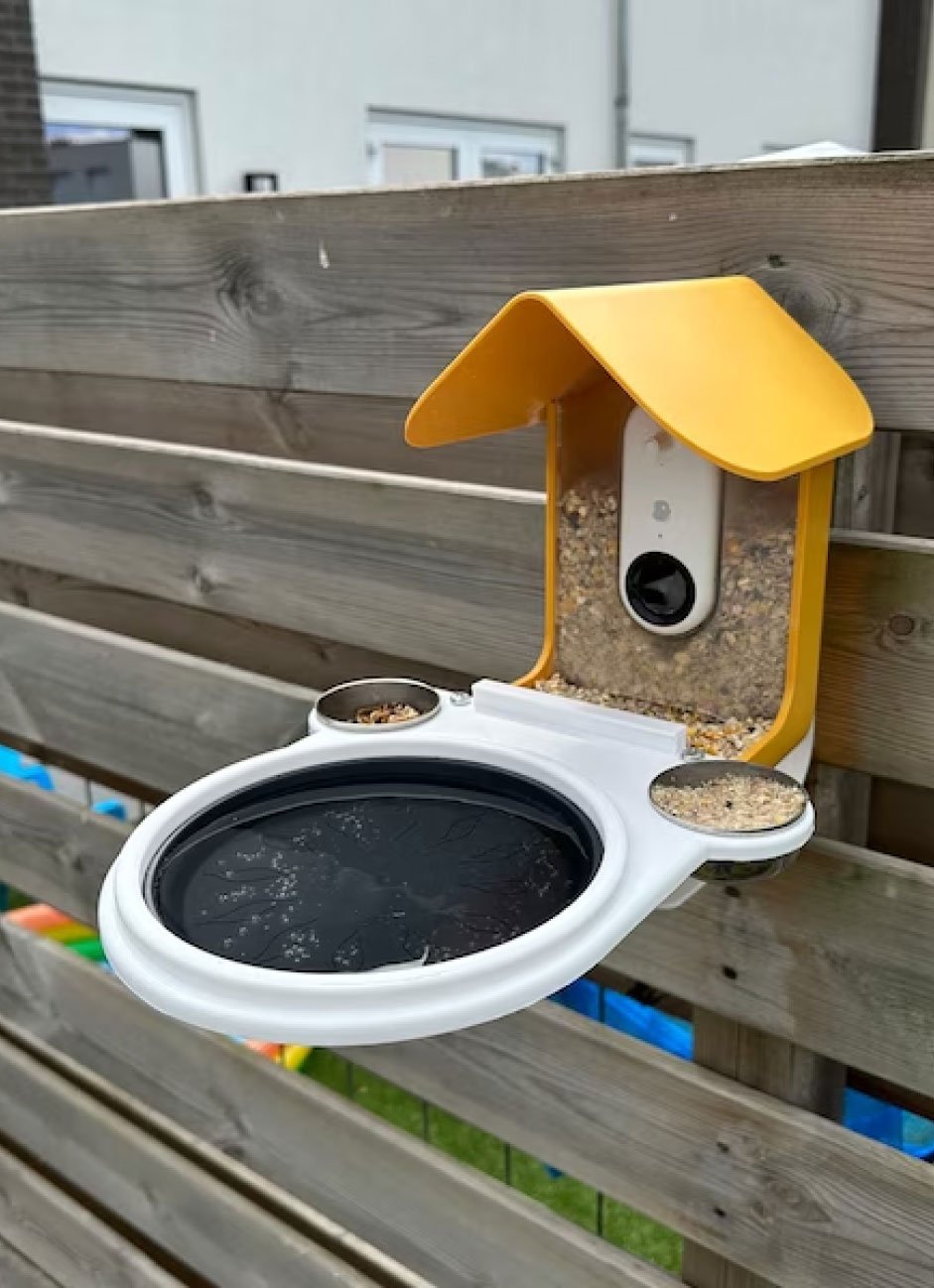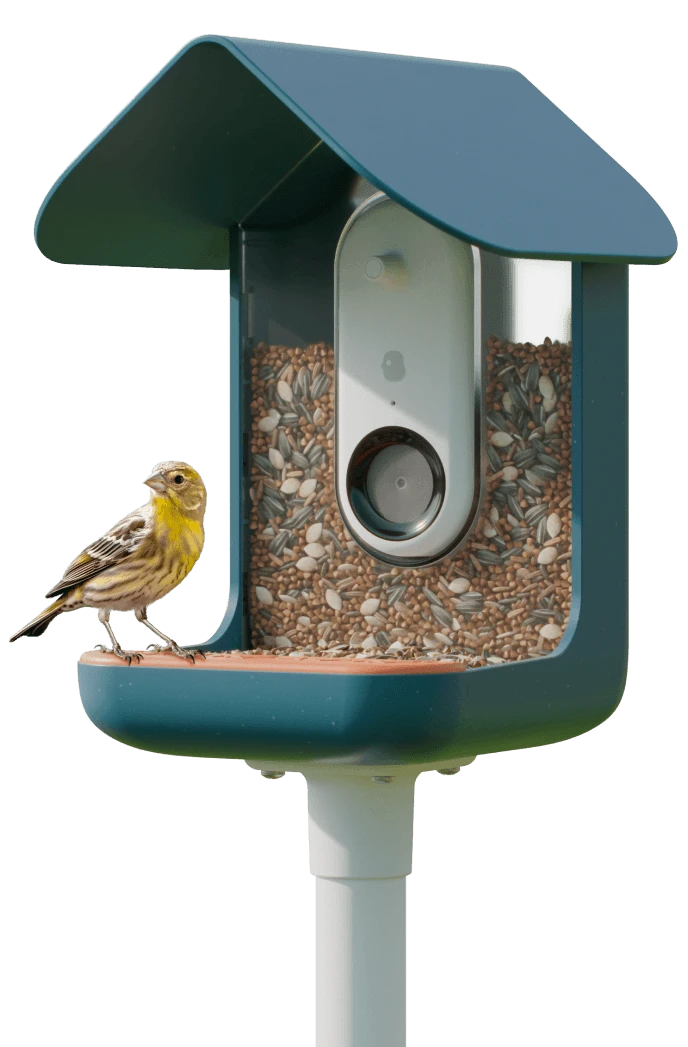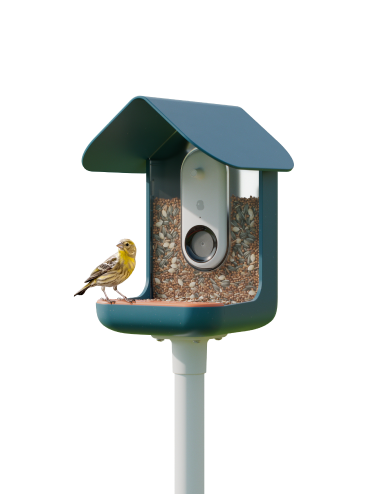Welcome to the wonderful world of Bird Buddy!
We know that not everyone is an expert on birds, and it can feel overwhelming to attract visitors to your feeder all year round. That’s why we’ve put together a simple guide to help you set up your Bird Buddy the right way, place it well, and keep it in use, along with some helpful tips.
If you’re asking yourself…
... and more, then this is the place for you!
Quick Help
Birds Need Some Time to Nestle In… Patience is Key!
Once you’ve set up your Bird Buddy and picked the perfect spot, it might take a little while to see your first bird visitor or get a postcard. No worries—this is completely normal and can happen for several reasons.
Birds may take time to adjust to new feeders, as they are creatures of habit seeking safety and comfort. A new feeder won’t attract them immediately, regardless of the food quality. It can take days, weeks, or even a few months for birds to overcome their suspicion and start using a new feeder; eventually, they will become comfortable coming over.
You might also be seeing birds visit your Bird Buddy but not receive a postcard right away. We know this can be a bit frustrating, but it’s normal! We’ll get into that later in the section about how our AI & bird detection works.
Remember, bird activity levels also vary throughout the year. In spring and summer, birds often have access to natural, nutrient-rich food sources, reducing their need for feeders. Some species may even migrate, leading to fewer birds in your area. This is all natural, and your feeder will be ready when they return.
Extra Reading:
Getting your Bird Buddy online
Curious about how far Bird Buddy can be from your Wi-Fi or how the Wi-Fi setup works?
The best way to test this is to take your Bird Buddy feeder to the spot you’d like to set it up in your backyard, and open the Bird Buddy app. In the app, tap the Live icon on the Home screen menu to test the livestream from your Bird Buddy camera. The Live feature shows live video from your camera, letting you watch visits in real-time and even take photos, so it’s a really good indicator of your Wi-Fi connection status.
Check how well the Live video works in that spot:
- If the video connects smoothly, the connection is strong enough, and you can comfortably set up your feeder there.
- If the video is choppy or doesn’t connect, move the feeder closer to the nearest access point to improve the connection.
Note that the Bird Buddy camera modules connect via the 2.4 GHz wireless standard and cannot access 5 GHz-only Wi-Fi networks, which won’t display during pairing. The 2.4 GHz frequency offers broader coverage and better wall penetration, ideal for reaching your outdoor setup. If your router is dual or triband, Bird Buddy should connect without issues.
On average, most users find stability within 50 feet of their Wi-Fi router, but the general rule of thumb is that the closer to the router, the better!
Extra Reading:
"Is this thing even working?"
Understanding Bird Buddy’s bird detection & AI technology
If you’re seeing birds at your feeder and wondering, “Why aren’t I getting postcards? Is my Bird Buddy broken?”—don’t worry! There’s a logical explanation.
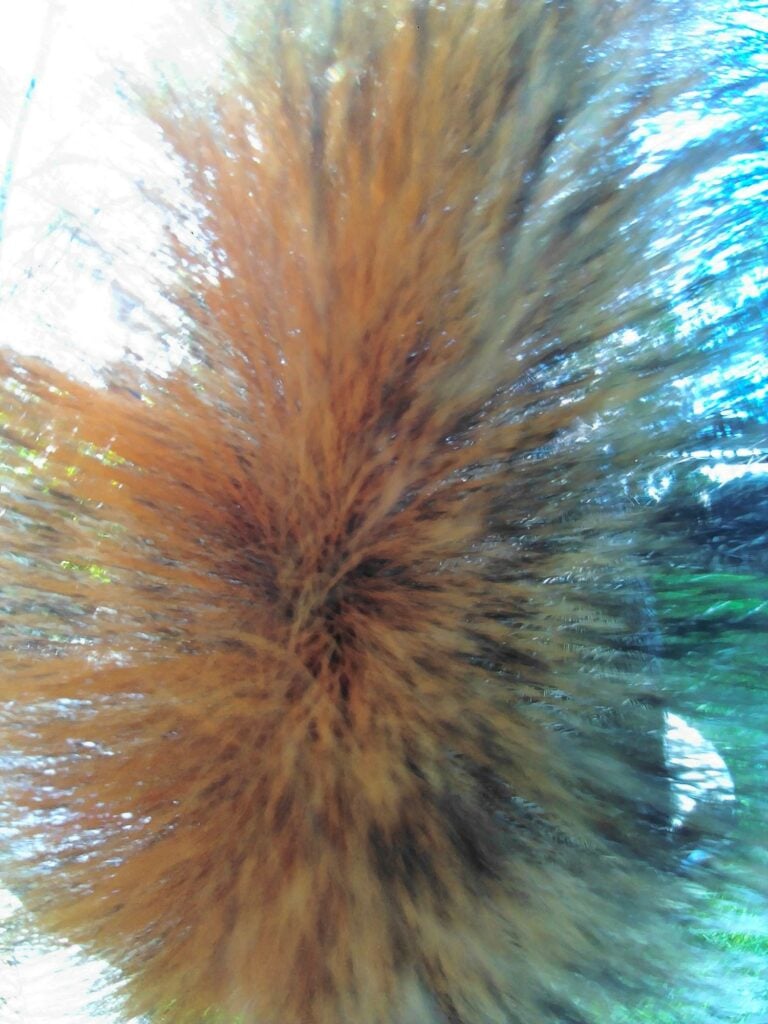
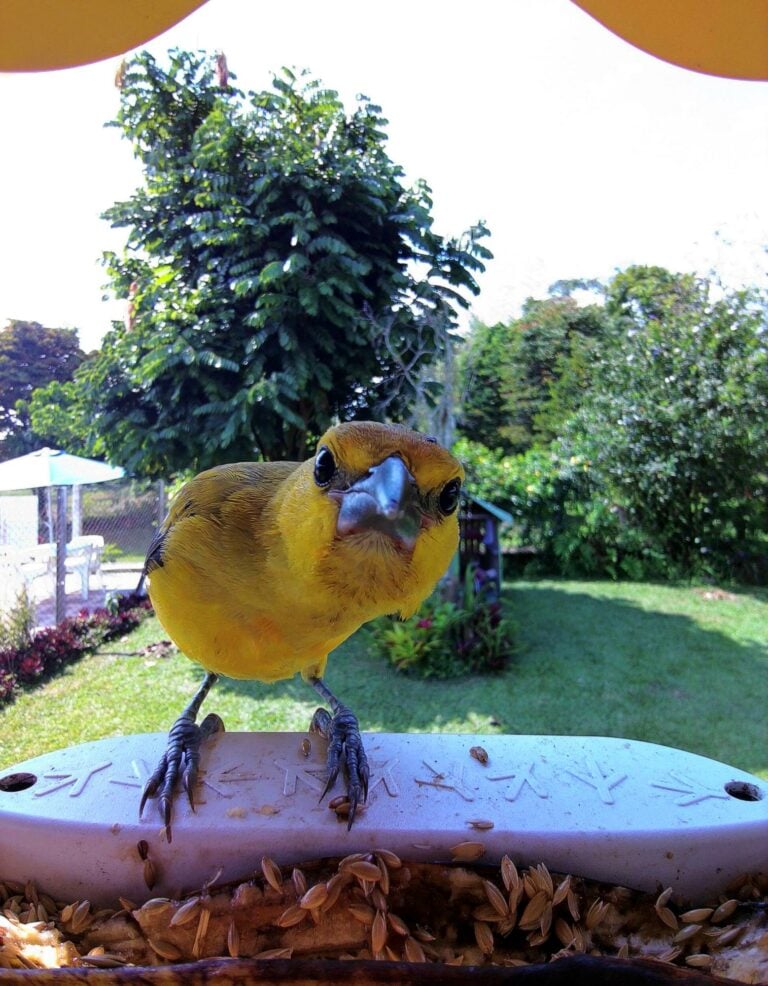
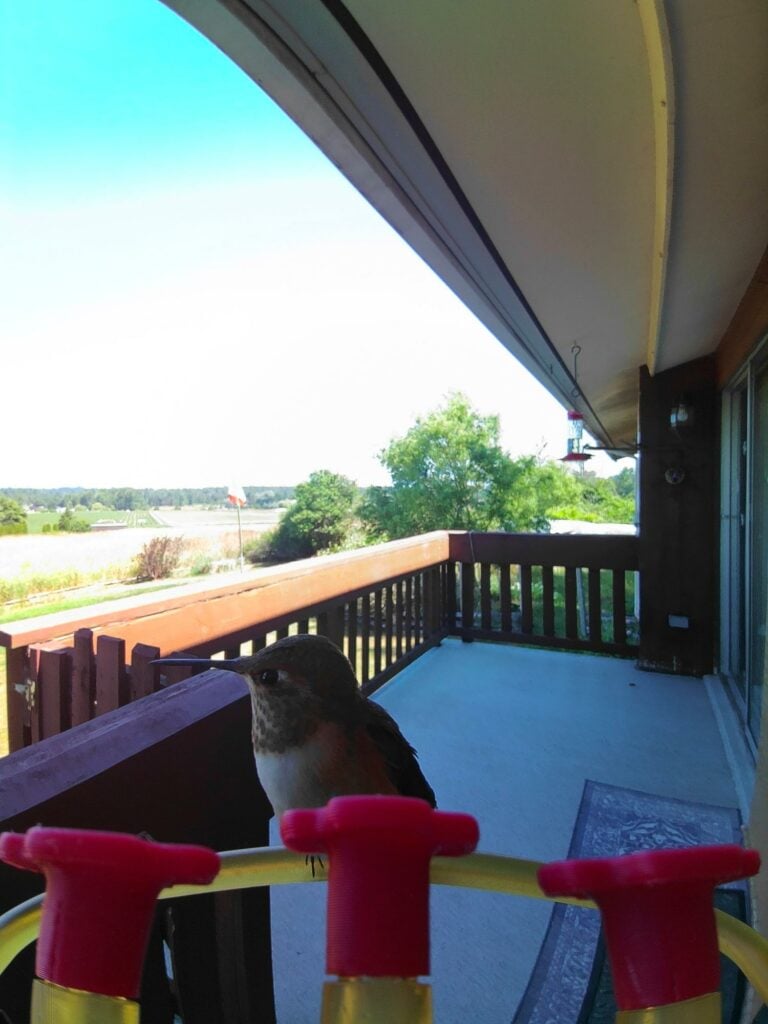
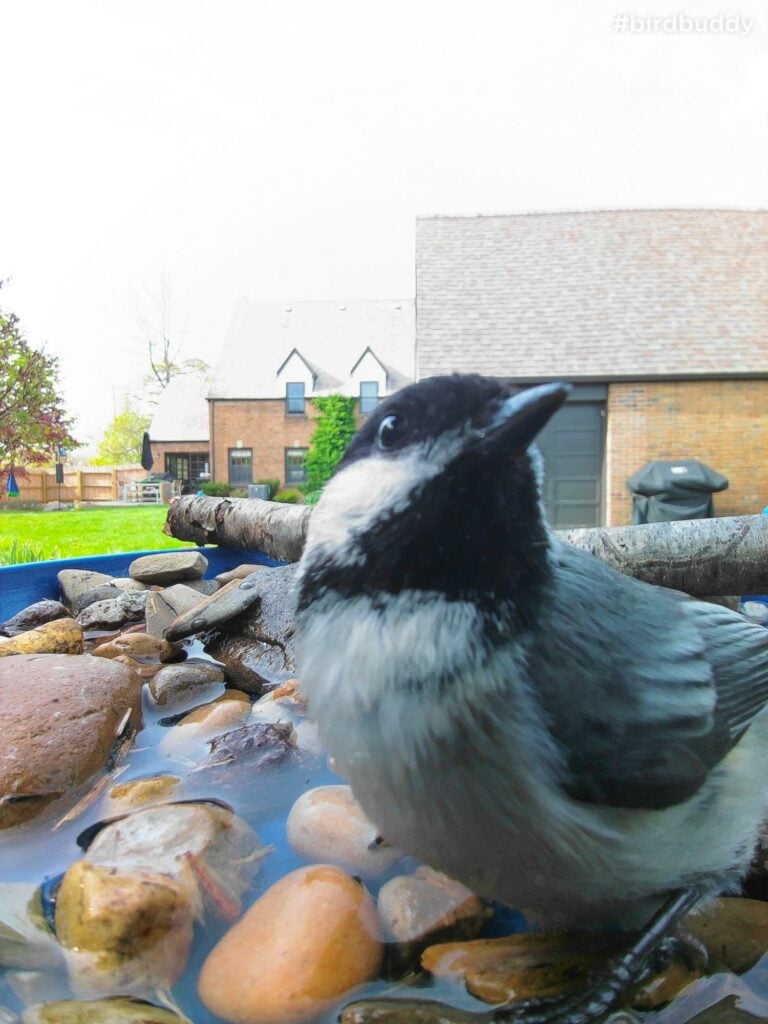
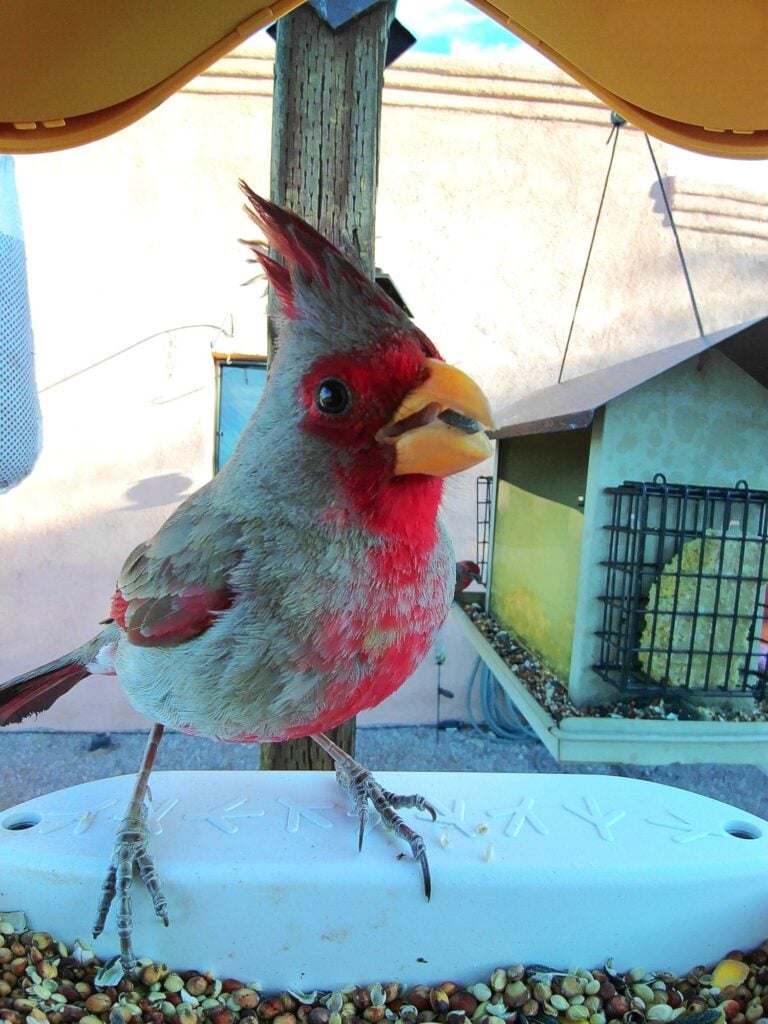
How Bird Buddy’s AI works
- Our system checks for distinct images with animals (like birds). For example, if we capture 9 photos but 3 are nearly identical, we’ll select the 7 most unique ones.
- Each of those images goes through a bird detector and species classifier model, which can recognize up to 6 birds and 4 species per photo.
- An image is usually considered “interesting” if it shows a clear, focused view of a bird. If all the pictures taken during a session are blurry or if the bird is too close to the camera, the model will likely mark them as “non-interesting.”
This evaluation process helps the AI model figure out what’s in the pictures, helping the recognition for non-bird visitors too. If the photos and videos don’t meet quality standards, they might not show up in your feed. By focusing on clarity and quality, Bird Buddy makes sure your feed is filled with beautiful and meaningful moments.
Two Viewing Modes
If you want a more unfiltered experience, the Bird Buddy app allows you to choose how your Home screen displays postcards with two viewing modes. You can access them through the Filter button on your Home Screen.
- More-action mode: Sends every photo your Bird Buddy takes to your feed, even if the AI doesn’t identify birds or finds them less interesting.
- Curated experience: Filters out lower-quality images, so you only see the best and most interesting photos for a more polished experience.
Extra Reading:
Introducing a New Feeder
If you’re a seasoned bird lover with existing feeders, introducing a new one might seem tricky. But don’t rush to remove your old feeders—using them wisely can help your feathered friends adjust more easily.
Extra Reading:
Location, Location, Location!
Where should I place my Bird Buddy for the best results?
Are there places for birds to hide such as branches, undergrowth, or hedges? Birds are always on the lookout for bigger predators lurking around, so having some coverage is very helpful. Placing a feeder way out in the open might help you to see the birds better, but it could be a frightening red flag for them.
Is there a chance of a lot of movement with this location? Be sure to minimize this as much as possible and introduce stability. Birds aren’t too keen on swinging all over the place when trying to grab a bite. Too much movement can be difficult to balance on, and make the food source not worth the attempt.
Is there a lot of “background noise”? Too much movement near, around, or in front of the feeder can sometimes interfere with the AI detection. If there are too many branches or leaves constantly moving in close proximity to the camera or near in view while birds are visiting, it may not generate postcards the same way.
Are there places that have coverage where a bird could possibly nest? This is a wonderful thing for birds to have close by come breeding season, and having food and safety will be a big motivation.
Do other predators have access to this location, such as cats or foxes? If you are mounting your feeder onto a fence or a wall, be especially mindful of the height you place this at so birds are not at risk. Higher up is better and less vulnerable for birds and makes them feel safer.
Are there windows or shiny reflections close to your feeder? Try to keep feeders at least 10 feet away from windows, so that birds won’t hit a window or injure themselves when trying to land. If you need to place the feeder closer to a window or on your house, you can do so, but try to make sure a reflective surface is not directly behind the feeder so it does not confuse the birds.
How’s the lighting? If your Bird Buddy is in a particularly poorly-lit area, the camera might have a hard time capturing enough detail to be able to identify the bird and create a postcard. It is also helpful to face your camera due North, if possible, as we have seen the best results in this position.
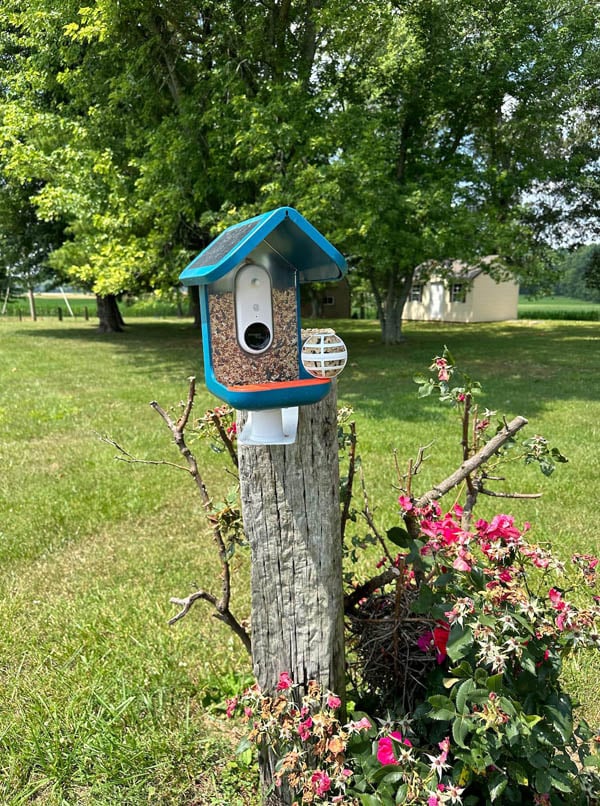
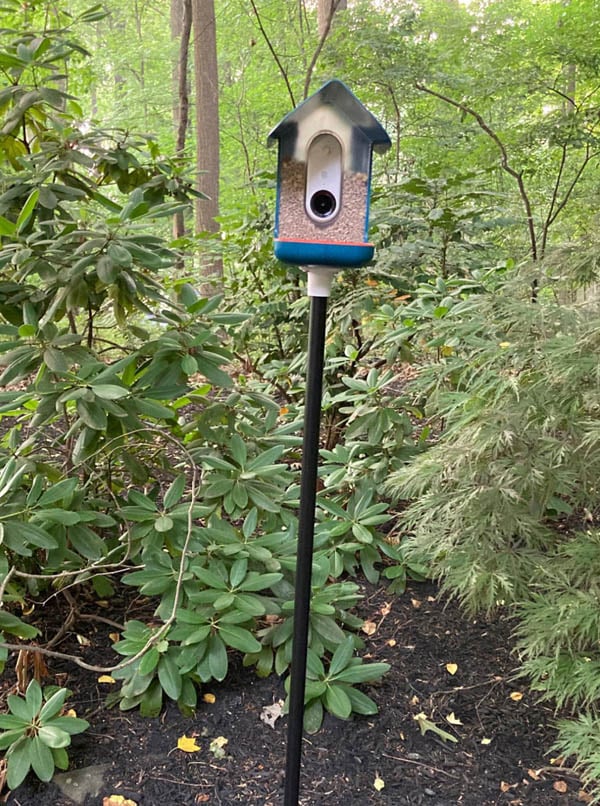
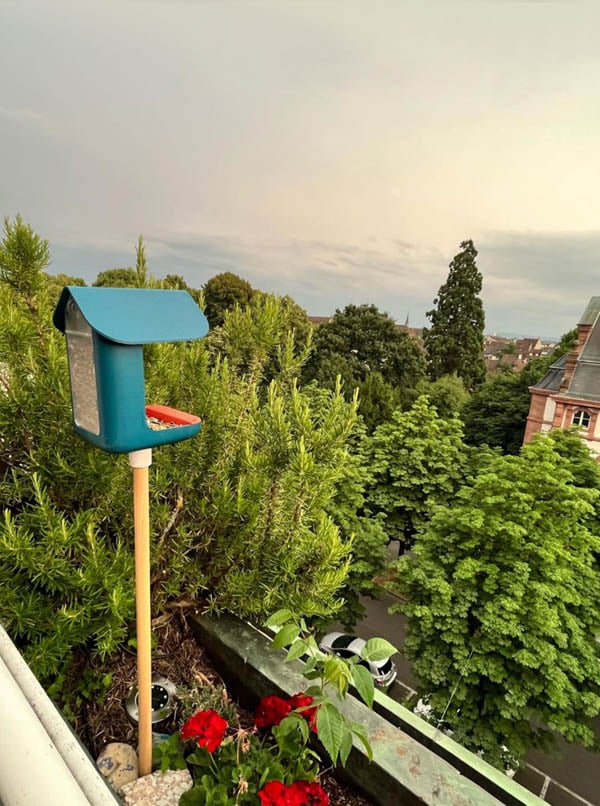
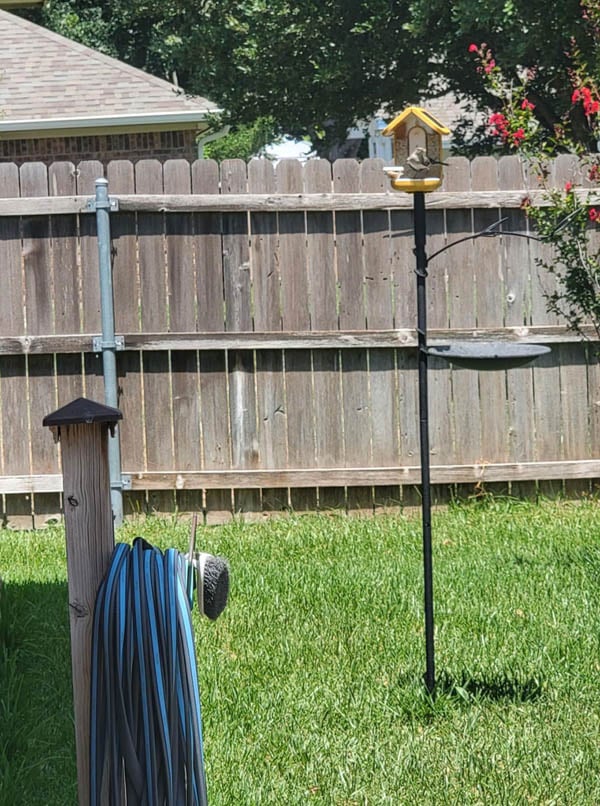
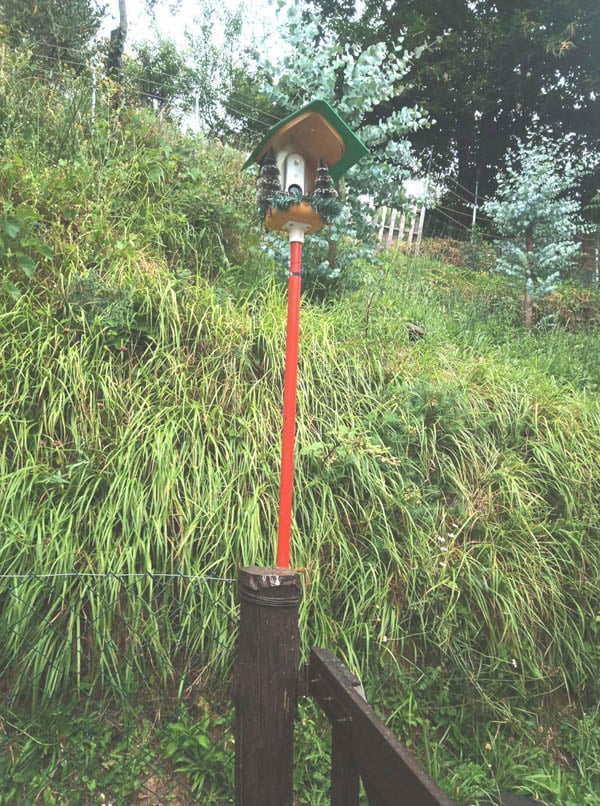
Extra Reading:
Fine Dining & Meal Planning
What should I put in my feeder?
The best type of seed can vary at certain times of the year, and can especially vary if you are hoping to attract a specific type of species. We have a great Bird Seed Guide to walk you through which seed offerings work best. Our biggest tip? Invest in high-quality seeds—it’s worth the extra cost to keep your birds happy and healthy!

Avoid low-quality seed mixes
Many store-bought seed mixes are filled with ingredients like wheatgrass kernels, split peas, beans, dried rice, or lentils—items birds typically won’t eat. These fillers bulk up the mix, but they leave birds missing out on nutrients while you’re left with wasted money and rotting debris under your feeder. Investing in a quality seed mix ensures your feeder becomes the ultimate bird destination.
Keep your feeder stocked to the brim
Maintaining your seed level close to the Bird Buddy perch makes feeding easier for birds and keeps them closer to the camera for crystal-clear photos. Fill up the seed all the way to the top as you can see in the “brand new feeder” photo below. Seed level almost in line with the perch is best, as this prevents the birds from having to move deeper into the seed tray to get their food, and moving closer to the camera can make photos out of focus. When birds get used to the new feeder, they will remain on it much longer and be calmer, even if the seed level is lower later on.
Brand new feeder
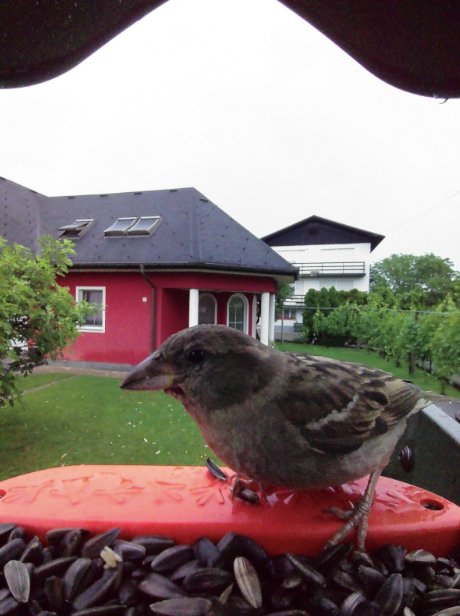
Established feeder
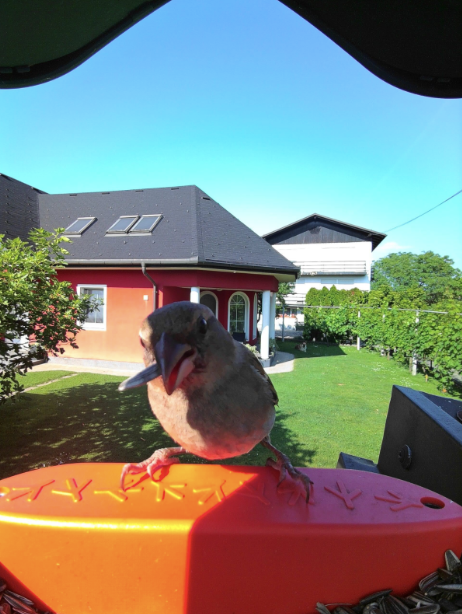
Extra Reading:
Bath Time!
During the summer, when food is abundant but water can be scarce, birds are often on the lookout for a refreshing drink or a quick dip to cool off. Adding a bird bath near your Bird Buddy setup is a great way to catch their attention and bring them closer to your feeder.
Place a few small rocks in the basin of the bird bath to create a more natural look and provide birds with a comfortable landing spot.
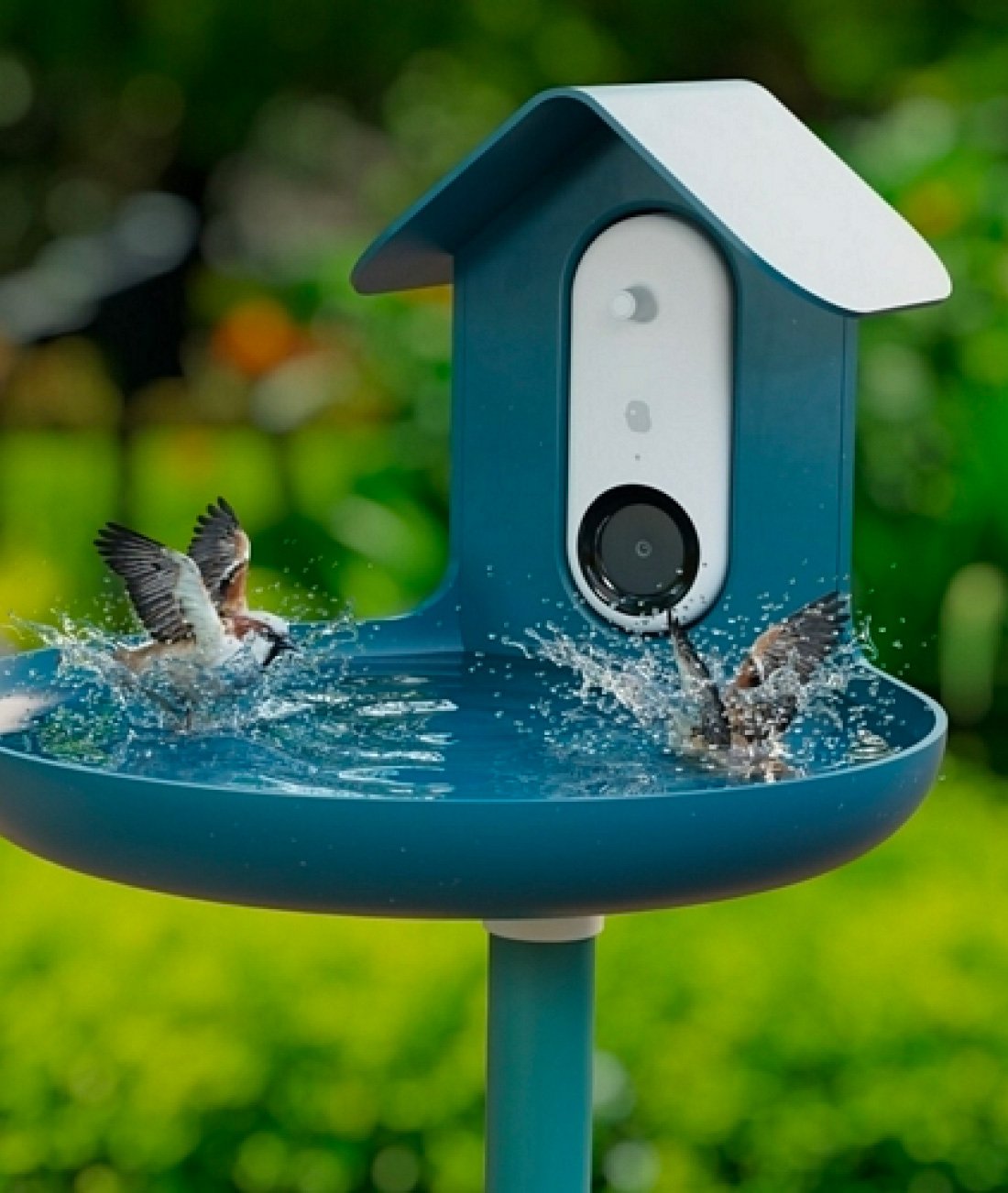
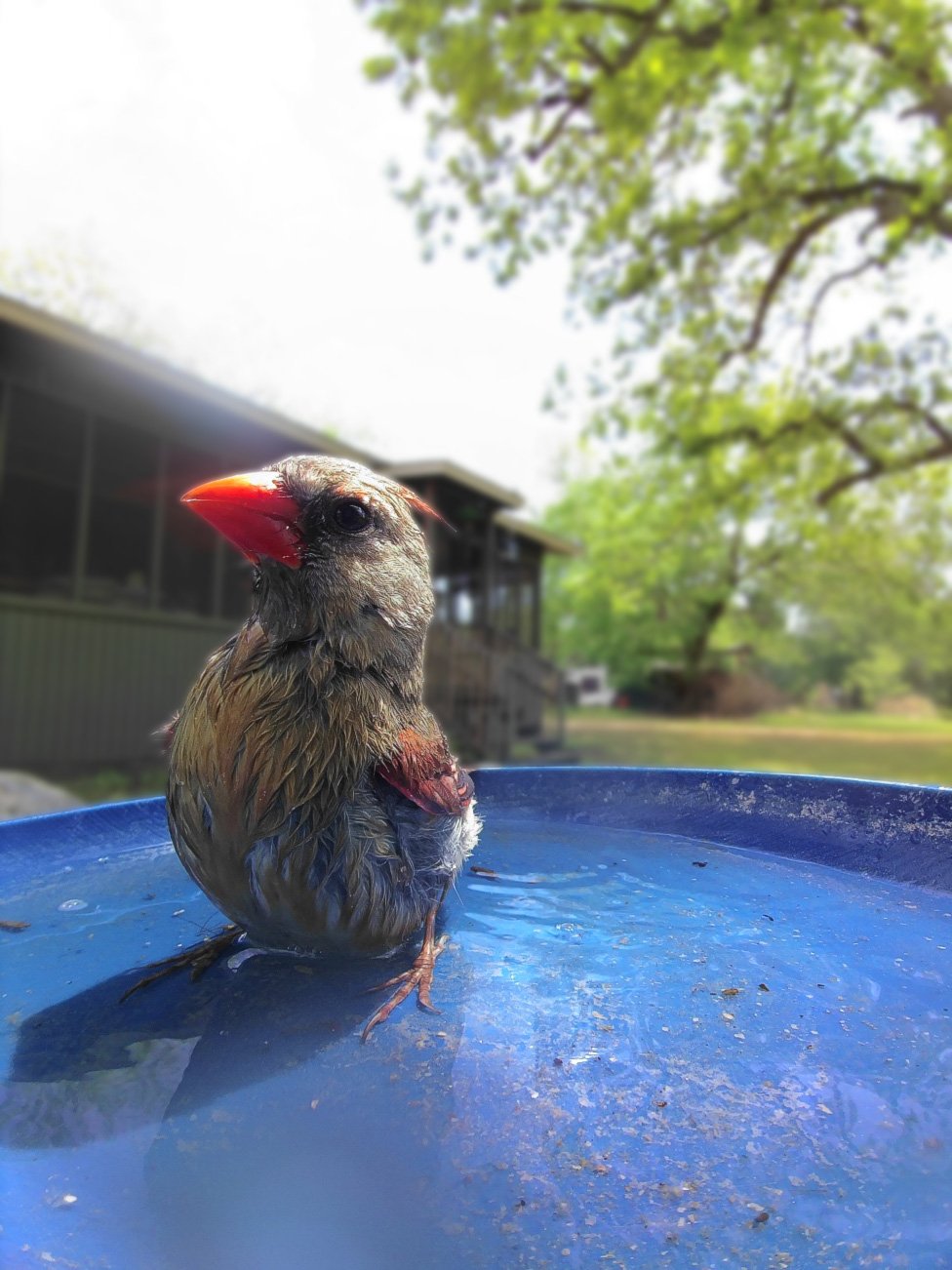
Extra Reading:
Your DIY Setups
If you are part of our Facebook Community or follow us on Social Media, you may have seen that some Bird Buddy users have a slightly different or unique setup. Some people put out small cups of jelly or jam (or orange slices!) to attract larger birds of a different variety, while others drill a long branch into the landing platform, so there is more space for birds to land, naturally perch, or gather. You might have even seen some special accessories that people make on Etsy to spruce up your feeder and attract more birds. We’re all for creative ideas, and some people find great success by trying something of the sort!
